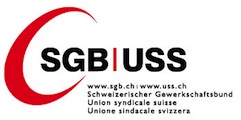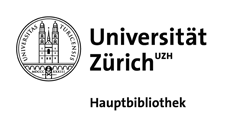Publications des institutions partenaires
bottom tariff cutting
This paper provides an empirical assessment of race-to-the-bottom unilateralism. It suggests that decades of unilateral tariff cutting in Asia‟s emerging economies have been driven by a competition to attract FDI from Japan. Using spatial econometrics, I show that tariffs on parts and components, a crucial locational determinant for Japanese firms, converged across countries...
Institution partenaire
Institut de hautes études internationales et du développement
/ 09/08/2011
bottom tariff cutting
This paper provides an empirical assessment of race-to-the-bottom unilateralism. It suggests that decades of unilateral tariff cutting in Asia‟s emerging economies have been driven by a competition to attract FDI from Japan. Using spatial econometrics, I show that tariffs on parts and components, a crucial locational determinant for Japanese firms, converged across countries...
Institution partenaire
Institut de hautes études internationales et du développement
/ 09/08/2011
bottom tariff cutting
This paper provides an empirical assessment of race-to-the-bottom unilateralism. It suggests that decades of unilateral tariff cutting in Asia‟s emerging economies have been driven by a competition to attract FDI from Japan. Using spatial econometrics, I show that tariffs on parts and components, a crucial locational determinant for Japanese firms, converged across countries...
Institution partenaire
Institut de hautes études internationales et du développement
/ 09/08/2011
bottom tariff cutting
This paper provides an empirical assessment of race-to-the-bottom unilateralism. It suggests that decades of unilateral tariff cutting in Asia‟s emerging economies have been driven by a competition to attract FDI from Japan. Using spatial econometrics, I show that tariffs on parts and components, a crucial locational determinant for Japanese firms, converged across countries...
Institution partenaire
Institut de hautes études internationales et du développement
/ 09/08/2011
bottom tariff cutting
This paper provides an empirical assessment of race-to-the-bottom unilateralism. It suggests that decades of unilateral tariff cutting in Asia‟s emerging economies have been driven by a competition to attract FDI from Japan. Using spatial econometrics, I show that tariffs on parts and components, a crucial locational determinant for Japanese firms, converged across countries...
Institution partenaire
Institut de hautes études internationales et du développement
/ 09/08/2011
bottom tariff cutting
This paper provides an empirical assessment of race-to-the-bottom unilateralism. It suggests that decades of unilateral tariff cutting in Asia‟s emerging economies have been driven by a competition to attract FDI from Japan. Using spatial econometrics, I show that tariffs on parts and components, a crucial locational determinant for Japanese firms, converged across countries...
Institution partenaire
Institut de hautes études internationales et du développement
/ 09/08/2011
bottom tariff cutting
This paper provides an empirical assessment of race-to-the-bottom unilateralism. It suggests that decades of unilateral tariff cutting in Asia‟s emerging economies have been driven by a competition to attract FDI from Japan. Using spatial econometrics, I show that tariffs on parts and components, a crucial locational determinant for Japanese firms, converged across countries...
Institution partenaire
Institut de hautes études internationales et du développement
/ 09/08/2011
bottom tariff cutting
This paper provides an empirical assessment of race-to-the-bottom unilateralism. It suggests that decades of unilateral tariff cutting in Asia‟s emerging economies have been driven by a competition to attract FDI from Japan. Using spatial econometrics, I show that tariffs on parts and components, a crucial locational determinant for Japanese firms, converged across countries...
Institution partenaire
Institut de hautes études internationales et du développement
/ 09/08/2011
bottom tariff cutting
This paper provides an empirical assessment of race-to-the-bottom unilateralism. It suggests that decades of unilateral tariff cutting in Asia‟s emerging economies have been driven by a competition to attract FDI from Japan. Using spatial econometrics, I show that tariffs on parts and components, a crucial locational determinant for Japanese firms, converged across countries...
Institution partenaire
Institut de hautes études internationales et du développement
/ 09/08/2011
bottom tariff cutting
This paper provides an empirical assessment of race-to-the-bottom unilateralism. It suggests that decades of unilateral tariff cutting in Asia‟s emerging economies have been driven by a competition to attract FDI from Japan. Using spatial econometrics, I show that tariffs on parts and components, a crucial locational determinant for Japanese firms, converged across countries...
Institution partenaire
Institut de hautes études internationales et du développement
/ 09/08/2011
bottom tariff cutting
This paper provides an empirical assessment of race-to-the-bottom unilateralism. It suggests that decades of unilateral tariff cutting in Asia‟s emerging economies have been driven by a competition to attract FDI from Japan. Using spatial econometrics, I show that tariffs on parts and components, a crucial locational determinant for Japanese firms, converged across countries...
Institution partenaire
Institut de hautes études internationales et du développement
/ 09/08/2011
bottom tariff cutting
This paper provides an empirical assessment of race-to-the-bottom unilateralism. It suggests that decades of unilateral tariff cutting in Asia‟s emerging economies have been driven by a competition to attract FDI from Japan. Using spatial econometrics, I show that tariffs on parts and components, a crucial locational determinant for Japanese firms, converged across countries...
Institution partenaire
Institut de hautes études internationales et du développement
/ 09/08/2011
bottom tariff cutting
This paper provides an empirical assessment of race-to-the-bottom unilateralism. It suggests that decades of unilateral tariff cutting in Asia‟s emerging economies have been driven by a competition to attract FDI from Japan. Using spatial econometrics, I show that tariffs on parts and components, a crucial locational determinant for Japanese firms, converged across countries...
Institution partenaire
Institut de hautes études internationales et du développement
/ 09/08/2011
Geographical Indications: the Economics of Claw-Back
Geographical Indications (GIs) for products (Basmati rice, Champagne sparkling wine, Antigua coffee, etc.) were regulated at the international level in 1995 (WTO TRIPS Agreement, Part II, Section 3). This paper proposes a model on the welfare effects of the socalled “claw-back” of GIs; i.e. the protection in a country (Home) of a GI of another country (Foreign), when the said GI had...
Institution partenaire
Institut de hautes études internationales et du développement
/ 09/08/2011
Economics of Geographical Indications: GIs modeled as club assets (The)
Geographical Indications (GIs) for products (Basmati rice, Champagne sparkling wine, Antigua coffee, etc.) were regulated at the international level in 1995 (WTO TRIPS Agreement, Part II, Section 3). This paper sets a general framework of analysis for GI-labeled goods, based on the modeling of a GI as a club asset (partial excludability and no rivalry in benefits to the firms that...
Institution partenaire
Institut de hautes études internationales et du développement
/ 09/08/2011
Constraining and supporting effects of the multilateral trading system on U.S. unilateralism
The subject of this paper is Section 301 of the Trade Act of 1974 of the United States, a statute that for the past 35 years has allowed the U.S. to unilaterally handle its trade disputes. More specifically, the paper examines the constraining and supporting effects of the multilateral trading system (GATT and WTO) on the effectiveness of Section 301 in general (127 cases), and of...
Institution partenaire
Institut de hautes études internationales et du développement
/ 09/08/2011
The End of Gatekeeping: Underwriters and the Quality of Sovereign Bond Markets, 1815-2007
We provide a comparison of salient organizational features of primary markets for foreign government debt over the very long run. We focus on output, quality control, information provision, competition, pricing, charging and signaling. We find that the market set up experienced a radical transformation in the recent period and interpret this as resulting from the rise of liability...
Institution partenaire
Institut de hautes études internationales et du développement
/ 08/08/2011
Hamlet without the Prince of Denmark: relationship banking and conditionality lending in the London Market For Foreign Government Debt, 1815 - 1913
This paper offers a theory of conditionality lending in 19th century international capital markets. We argue that ownership of reputation signals by prestigious banks rendered them able and willing to monitor government borrowing. Monitoring was a source of rent, and it led bankers to support countries facing liquidity crises in a manner similar to modern descriptions of “...
Institution partenaire
Institut de hautes études internationales et du développement
Français, English / 08/08/2011
A Bayesian spatial probit estimation of Free Trade Agreement contagion
This paper analyzes the spatial interdependence of Free Trade Agreements (FTAs) in a cross-section framework using the Contagion Index proposed by Baldwin and Jaimovich (2010). A Bayesian heteroskedastic probit model is estimated, where a spatial lag is built based on the Contagion Index, finding evidence of interdependence related with a domino-like effect. I compare the results...
Institution partenaire
Institut de hautes études internationales et du développement
/ 08/08/2011
Preferential Tariff Formation : the Case of the United States
This paper addresses the impact of Multilateral Trade Liberalisation (MTL) on the preferential tariffs granted by the United States. For a given MFN tariff, we model the preferential tariff with a simple linear functional form. We take MTL of the US as known to the world by the end of Uruguay Round in 1994 and estimate its impact on preferential tariff negotiations during 1995 to...
Institution partenaire
Institut de hautes études internationales et du développement
/ 08/08/2011
Pages
Le portail de l'information économique suisse
© 2016 Infonet Economy












